Mary "May" Elizabeth Cook, 1863 – 1951
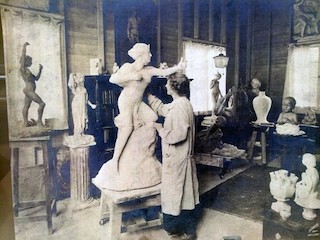
Mary (May) Elizabeth Cook was born on December 31, 1863 in Chillicothe, Ohio, the daughter of Corporal William Alexander Cook and Anna Sappington Cook. She studied ceramic engineering at Ohio State University but was not awarded a degree because she was a woman (Ross County Historical Society).
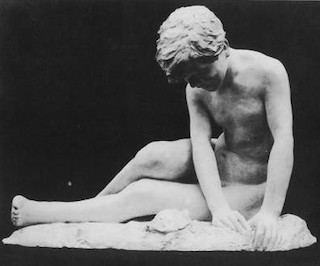
Cook moved to Paris in the years before World War I, studying at the Académie Colarossi with Paul Bartlett and at the École des Beaux-Arts. The length of her stay as a resident at the Club is unknown, but she listed her address as 4 rue de Chevreuse when she exhibited her plaster sculpture "Joyeuse Rencontre" at the 1913 Salon des artistes français at the Grand Palais. The marble version of this work was installed at the Jeffrey Mansion in Bexley, Ohio in the 1950s.
Passport records indicate that May Cook returned to the U.S. on August 12, 1914 and began working as a lithographer and designer at Roseville Pottery in Zanesville, Ohio. She exhibited a large number of sculptures at a 1915 show devoted to her work at the Toledo Museum of Art.
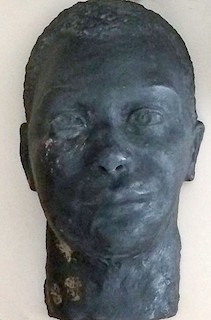
In 1918, Cook joined the Army's Women's Volunteers and was assigned to the medical corps. For 15 months, she worked in the maxillo-facial reconstruction unit at Fort McHenry, where 500 men were treated using techniques pioneered by Vilray P. Blair in Europe. She was instrumental in helping surgeons develop the art and science of facial reconstruction for severely disfigured World War I soldiers:
In the beginning Miss Cook made drawings and watercolor sketches but shortly got into the important work of helping to produce a likeness of a patient to his former self. By means of her artist's knowledge of anatomy and sculpturing the missing part could be drawn or modeled if the operating surgeon desired. Sometimes the photo of the patient himself or of one of his family would help determine the form but more often the result would be from the artist's study [...] Casts are made of the patients; these are made of wax and afterwards tinted and colored the exact color of the scars showing the conditions of the wounds after different operations. Sometimes two or three models are enough, but often several models are made, the final one showing the normal conditions of the nose, chin, or eye socket [...] (Kirkpatrick).
She continued her work at the Columbus Barracks in Ohio:
The French system of using artificial chins, noses, eyes, etc. electroplated and tinted to match the skin, was not popular with the American soldier. As one surgeon said, "They wanted real noses to blow, not tin ones," and were willing to suffer any amount of pain and endure any number of operations to obtain them. The fact that one of the 45 boys at the Columbus Barracks has just undergone his twenty-first operation proves this (Kirkpatrick).
In addition to assisting surgeons, Cook taught the soldiers modeling and carving to occupy their time between operations. According to her great-nephew, "Much of the work was done at her own expense and she was never repaid by the U.S. Government" (AskArt).
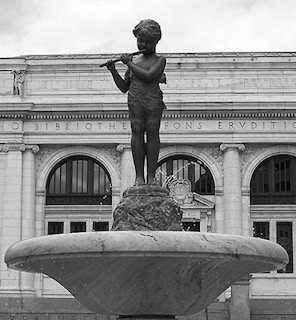
Cook is perhaps best-known for her Peter Pan sculpture atop the fountain in front of the Main Library in Columbus, Ohio. "She also created bronze bas-relief sculptures of Rutherford B. Hayes, Warren G. Harding, James Garfield, and others, on display in the main corridor of the Ohio Supreme Court Building, Columbus" (AskArt).
The Ross County Historical Society noted that, "Her work was exhibited all over the country. Much of her work is in the form of statues, fountains, terra cotta panels, and bas reliefs which can still be found in major cities such as New York, St. Louis, Washington, and Columbus, Ohio."
She was a member of the National Sculpture Society, the American Ceramic Society, and the National Art Club.
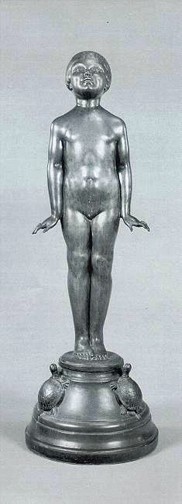
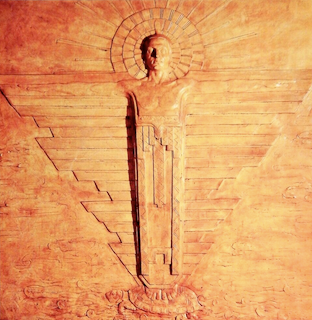
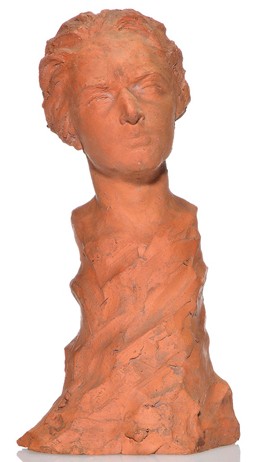
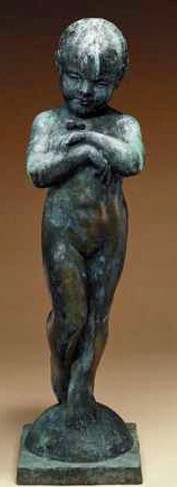
Not much is known about May Cook’s later life. Years of hospitalization following a fall from a scaffold in 1943 prevented her contributing to the war effort in WWII.
She died on April 4, 1951.
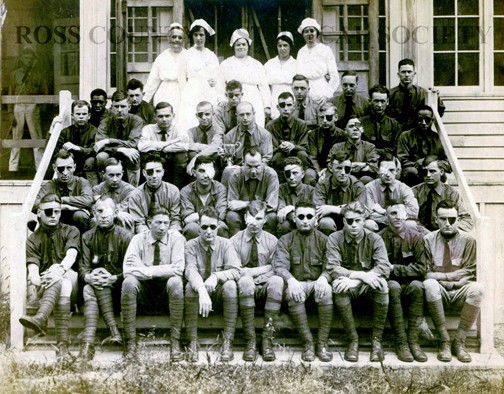
Sources
- Ancestry.com.
- “Exhibition of Sculpture by May Elizabeth Cook.” Catalogue of Paintings, December 1915. The Toledo Museum of Art.
- Kirkpatrick, Harriet. "Art & Artists." The Ohio State Journal. Columbus, Ohio: The Ohio State University, December 21, 1919.
- “May Elizabeth Cook (1863-1951).” AskArt.
- Ross County Historical Society Tumblr.
- Wilson, Sonia. "Bexley Campaign to Restore Beloved Sculpture." The Chimes, August 30, 2018.